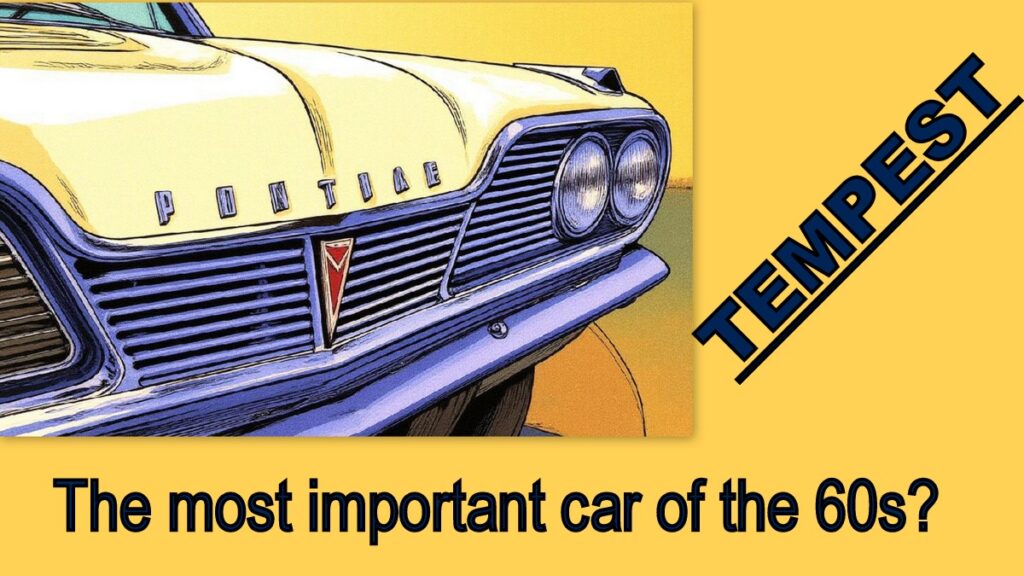The 1960s were full of legendary cars like the Mustangs, Chargers and SS Chevelles.
They were groundbreaking cars in their own way—you could call the 60s a golden era for car builders.
They were classics, but they were all cut from the same cloth of a humble little car called the Pontiac Tempest.
Jerry Sutherland
The Pontiac Tempest debuted in late 1960 just in time for the 1961 GM lineup. The Tempest was part of the B-O-P (Buick Special, Olds F-85, Pontiac Tempest) compact car class designed to take on cars like the VW Beetle, Chrysler Valiant and Ford Falcon.
The Buick and Olds had their own brand name following , but the Pontiac Tempest cut its own swath in life thanks to the efforts of a guy named John DeLorean. Yes—that John DeLorean who turned a whole generation of 80s movie nerds into fans of his car in the movie ‘Back to the Future’.
DeLorean was also the man behind the legendary Pontiac GTO, but it started with the Tempest. He was Pontiac’s director of advanced engineering, and he believed every car Pontiac built should have an engineering edge over the competition.
The ‘Wide Track’ Pontiac concept began under DeLorean because he knew a lower, wider car had a distinct marketing and engineering advantage over the other guys. The Tempest gave him an opportunity to apply more advanced technology to a compact car.
The first thing DeLorean wanted was a 50-50 weight balance in the Tempest. He pushed through a rear transaxle, a flexible driveshaft, and a flat floor to get the 50-50 number. They called it a rope drive, but the Tempest driveshaft was really a hi-tech, chrome-moly, torsion bar.
DeLorean was also a visionary in the engine compartment. Olds and Buick went with a V-6 or V-8 option, but DeLorean opted for an inline 4-cylinder for more efficiency and better mileage. He started by setting up a 389 cubic inch V-8 to only run on one side, but eventually the engine was built around a 389 cut in half.
This little 4-banger had decent mileage and enough power to push a Tempest to over 90 miles per hour. Pontiac played with the little Slant 4 and upped the horsepower from 110 horsepower to 155 horsepower after a few compression tweaks and a four-barrel carb option. Eventually, the 215 cubic inch aluminum Buick V-8 became an option on the Tempest.
The Tempest was a great-looking car in any form, so Pontiac added a LeMans convertible and hardtop version to the lineup. They also added a 326 cubic inch V-8 (based on the 389 big block) that really woke up the Tempest in its 4-barrel (280 horsepower) form. Pontiac also updated the rear suspension to Corvette-like with a trailing arm design.
Pontiac built a bigger Tempest for the first time in ’64 and went all-in on the LeMans name. The GTO was born—but not before the Tempest platform set the stage for the 60s muscle car revolution.
If you examine the Tempest history from front to back, it was the first pony car with a sporty high-revving attitude in convertible and hardtop form. Then the Tempest became a very popular intermediate car, and it spawned the GTO.
That makes the Tempest the most important car of the 1960s.
Jerry Sutherland
By: Jerry Sutherland
Jerry Sutherland is a veteran automotive writer with a primary focus on the collector car hobby. His work has been published in many outlets and publications, including the National Post, Calgary Herald, Edmonton Journal, Ottawa Citizen, Montreal Gazette, Saskatoon StarPhoenix, Regina Leader-Post, Vancouver Sun and The Truth About Cars. He is also a regular contributor to Auto Roundup Publications.
- CLICK HERE TO SIGN UP FOR THE NEWSLETTER
- CLICK HERE to Like us on Facebook
- CLICK HERE to Follow us on Twitter
- CLICK HERE to Follow us on Pinterest
